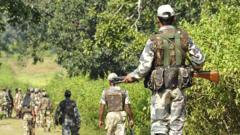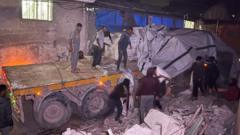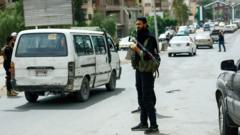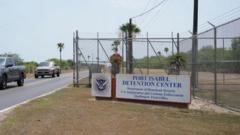The recent earthquake has further exacerbated the already dire situation in Myanmar, where a civil war has displaced millions and created unprecedented food insecurity.
**Devastating Earthquake Strikes War-Torn Myanmar, Deepening Humanitarian Crisis**
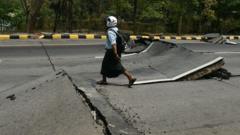
**Devastating Earthquake Strikes War-Torn Myanmar, Deepening Humanitarian Crisis**
A powerful 7.7 magnitude earthquake hits Myanmar amidst ongoing civil war and severe food shortages, leaving millions in distress.
The earthquake struck the city of Sagaing, central Myanmar, on Friday, sending shockwaves across a nation already grappling with a relentless civil war, a food crisis, and an ailing economy. Measuring 7.7 on the Richter scale, the quake affected not just Sagaing but also nearby Mandalay—the second-largest city—and even Nay Pyi Taw, the capital located more than 150 miles away.
Communications in the affected regions have been challenging since the quake's occurrence, with many residents lacking electricity and internet access. As foreign journalists face significant hurdles to report due to strict governmental controls, verifying the situation in Myanmar remains arduous.
Myanmar, a nation with a turbulent political history, has been under military rule since a coup in February 2021 ousted the democratically elected government, led by Aung San Suu Kyi. Despite initially moving toward democracy in the early 2010s, the military’s return to power prompted widespread protests and a brutal crackdown resulting in numerous casualties and injuries.
From peaceful dissent, what began as a civil disobedience movement spiraled into an armed insurgency comprised of pro-democracy and ethnic armed groups opposing the military regime. Currently, clashes between the military and various resistance factions continue unabated, leading to significant territorial losses for the army and escalating hostilities throughout the region.
As the United Nations reports indicate, over 3.5 million individuals have been displaced due to ongoing violence, with rising food insecurity impacting countless families. The UN's World Food Program states the country is experiencing "unprecedented levels" of food insecurity, with inflation rendering basic necessities unaffordable for many.
In light of the recent calamity, the earthquake adds to the miseries of Myanmar’s 50 million citizens, complicating an already dire humanitarian crisis. The quake struck near Sagaing—a region recently identified as a rebel stronghold. There were reports of a hospital converting to a "mass casualty site" in Naypyidaw, where emergency services were overwhelmed by incoming casualties.
The ruling junta has declared a state of emergency in multiple areas affected by the earthquake and has made a cautious call for international assistance. Nonetheless, the response amidst an ongoing military conflict under the leadership of General Min Aung Hlaing remains uncertain, raising concerns about how effectively the nation will recover from both the earthquake and the relentless humanitarian challenges that lie ahead.
Communications in the affected regions have been challenging since the quake's occurrence, with many residents lacking electricity and internet access. As foreign journalists face significant hurdles to report due to strict governmental controls, verifying the situation in Myanmar remains arduous.
Myanmar, a nation with a turbulent political history, has been under military rule since a coup in February 2021 ousted the democratically elected government, led by Aung San Suu Kyi. Despite initially moving toward democracy in the early 2010s, the military’s return to power prompted widespread protests and a brutal crackdown resulting in numerous casualties and injuries.
From peaceful dissent, what began as a civil disobedience movement spiraled into an armed insurgency comprised of pro-democracy and ethnic armed groups opposing the military regime. Currently, clashes between the military and various resistance factions continue unabated, leading to significant territorial losses for the army and escalating hostilities throughout the region.
As the United Nations reports indicate, over 3.5 million individuals have been displaced due to ongoing violence, with rising food insecurity impacting countless families. The UN's World Food Program states the country is experiencing "unprecedented levels" of food insecurity, with inflation rendering basic necessities unaffordable for many.
In light of the recent calamity, the earthquake adds to the miseries of Myanmar’s 50 million citizens, complicating an already dire humanitarian crisis. The quake struck near Sagaing—a region recently identified as a rebel stronghold. There were reports of a hospital converting to a "mass casualty site" in Naypyidaw, where emergency services were overwhelmed by incoming casualties.
The ruling junta has declared a state of emergency in multiple areas affected by the earthquake and has made a cautious call for international assistance. Nonetheless, the response amidst an ongoing military conflict under the leadership of General Min Aung Hlaing remains uncertain, raising concerns about how effectively the nation will recover from both the earthquake and the relentless humanitarian challenges that lie ahead.









